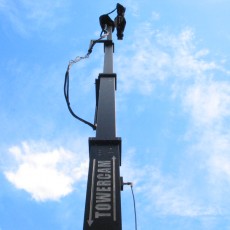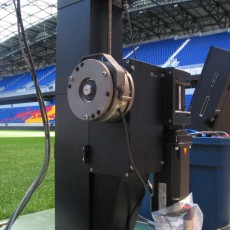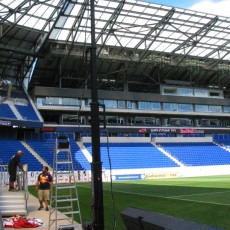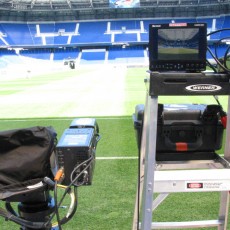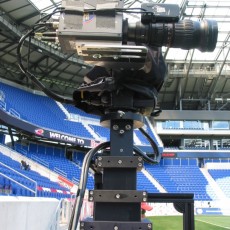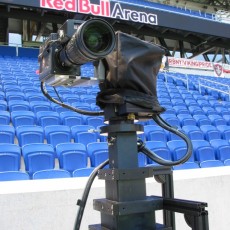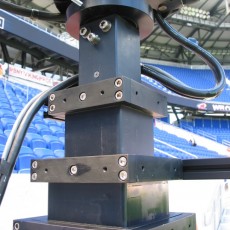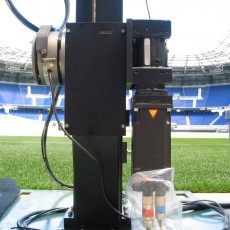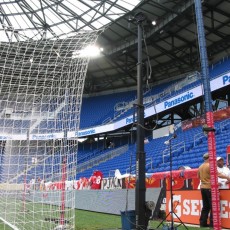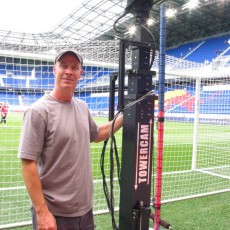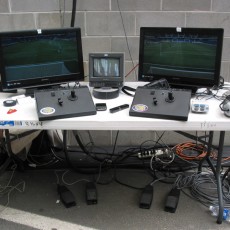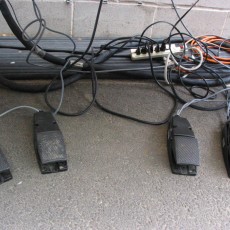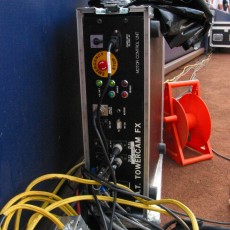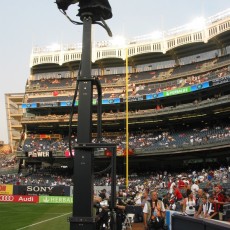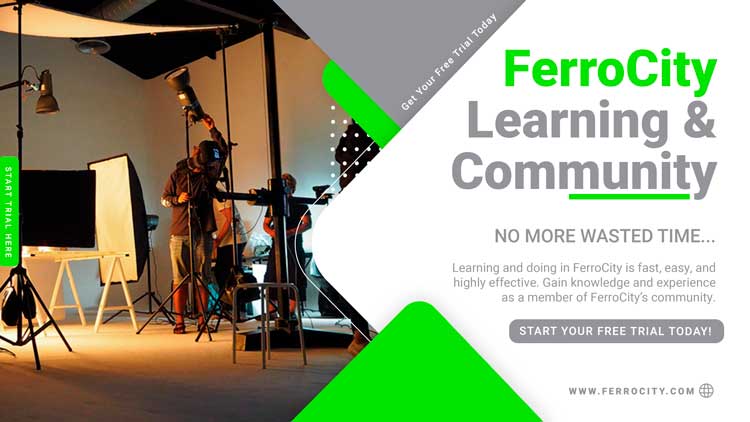Operating the “TowerCam”
I’ve worked with tons of different cameras, lenses, mounts, robotics, jibs, dollies, just about anything related to capturing images, so when a new technology comes along, and I have the chance to work with it, I jump on the opportunity.
The director for ESPN soccer games, who I’ve worked with for years, wanted to add a different dimension to ESPN’s match coverage in the US. Most soccer matches here take place in football stadiums, where real estate is not a problem and there’s plenty of room for a jib, but in European stadiums, room is very limited, so the use of the Tower Cam is common.
The Tower Cam is a vertically, telescoping camera mount that rises and lowers via two operator-controlled foot pedals. It’s similar to the jibs’ up and down motion but without the arm’s sweeping range. But what it lacks in that department, it makes up in ease of set up, break down, smaller footprint and reliable, remote operation.
And when the towers’ movements are complimented by the robotic cameras’ zoom, tilt and pan, an extra dimension of composition is added.
The director was on the hook in making ESPN spend all this money to rent this new piece of technology. The tower cam guys were hoping ESPN would like it, and result in landing a juicy contract. There was a lot riding on this. The director wanted it to look good, the tower folks wanted to look good, I wanted to look good, it was absolutely nerve wrecking! This was my first time using it. I’ve done robotics for years, but never had to use my feet at the same time. And to add more fuel to the fire, I had to operate two of them, one behind each goal!
The Director went over what look he wanted to achieve. He was looking for a downward motion as the player taking the shot, approached the goal. He wanted the tower to telescope down, the camera to widen, so when the shot was taken, the camera would be right behind the goal, a similar shot you would get from a jib, but much more stable and controllable.
I sat down on a swiveling chair, the best way to spin between the foot pedals for each tower and robotic controls for each camera. The pedals control how high and how low the tower telescopes. Applying different levels of pressure to each pedal can control the rate of speed. The softer you push down, the slower it rises or lowers. I felt like the Wizard of Oz working his levers, spinning wheels. The whole thing was absolutely insane.
The game started, and I quickly got the hang of it. Controls were very responsive, and the hydraulic and pulley system ran very smoothly. Its hefty base made the whole structure extremely stable. Following the game action was no problem at all, I know the game pretty well and I know when the action is culminating into a shot-on-goal or when they’re about to rip one into the goal.
When the players are on the offensive, running towards me, they’re passing the ball back and forth, I have the camera up high, and as they get closer, about to take a shot, I bring the tower cam down so it’s now behind the goal net.
When the goalie had the ball and was about to kick it, I would do the opposite, start the camera low behind the goal, the goalie would be head to toe in my frame. As he ran to kick it, I would raise the camera and zoom out at a medium speed, showing not only the action of kicking the ball but the expanse growing as the ball sailed across the field. I would then spin in my chair and take control of the opposite tower cam, raising it high, and then lowering and zooming in as the action approached. This back and forth went on for the whole game, with only a break at halftime. That’s 90 total minutes of game play. Crazy, intense pressure!
All the extra movement in the scene, the up and down, the camera zooming in and out, it all looked really cool, and when you got the timing right, it was some amazing stuff. It added a whole new dimension to shot composition. It wasn’t just about keeping the subject in the frame; it was all this other action taking place around, and because of the subject.
Everyone seemed to be happy. It was important to me that this trial go off without a hitch. I wanted to save the directors ass, and do good for the company. That was a lot of responsibility on my shoulders, no wonder I was exhausted! But it was all well worth it.
_________________________________________________________________________________________________________________
Here are some pics I took during my time working with the TowerCam…
- The “Tower” of the the TowerCam
- Telescoping Motor
- TowerCam position at Red Bull Arena
- HD output of the camera
- Robotic Camera mount on TowerCam
- Robotic Camera pan and tilt motor
- TowerCam extension sleeves
- Telescoping Motor controls
- TowerCam fully extended
- Rick and his TowerCam
- Operating station: Pan, Tilt, Zoom, and Focus controls.
- Foot Pedals to operate the Tower up and down
- TowerCam software control interace
- Soccer and TowerCam debut at Yankee Stadium
